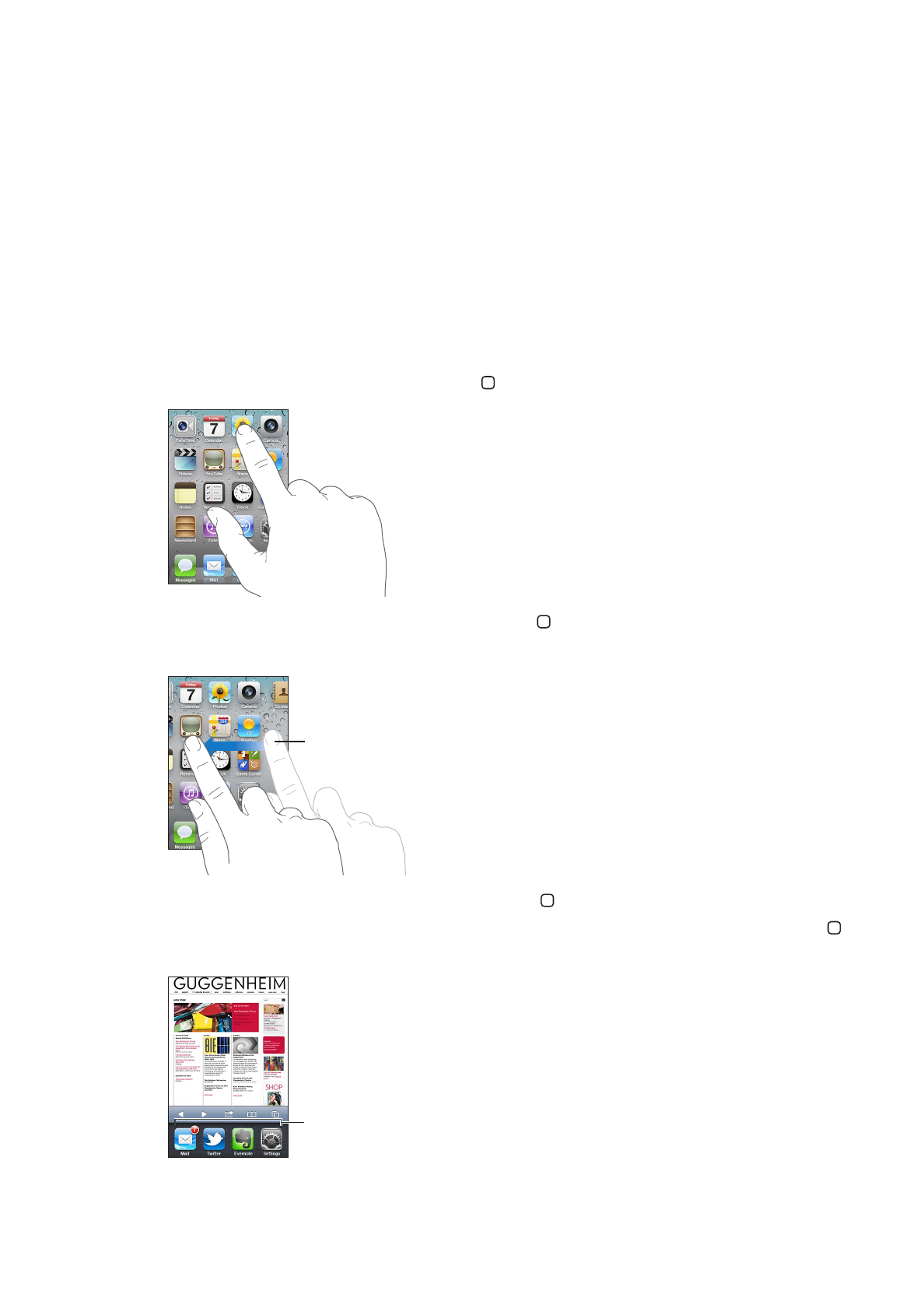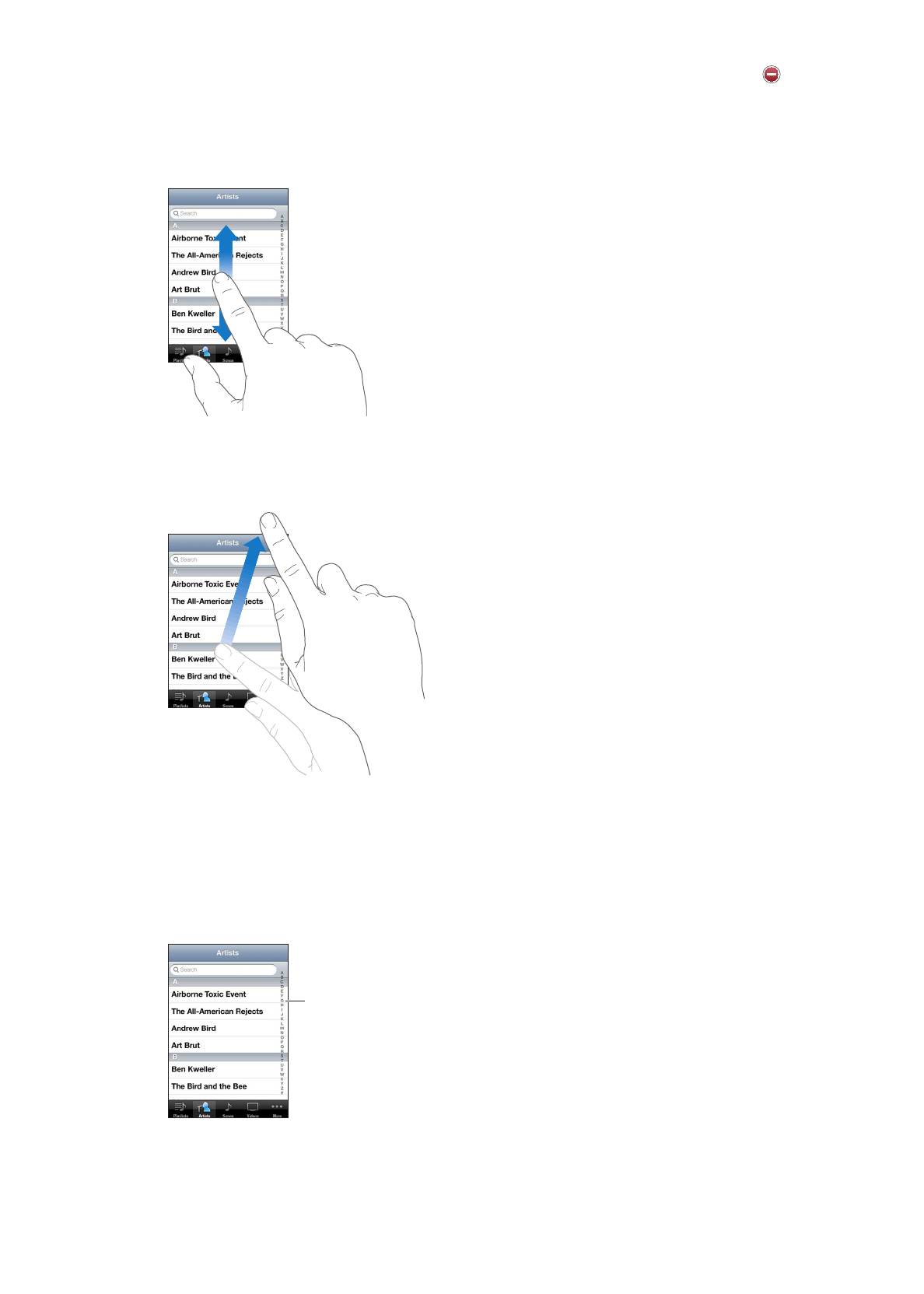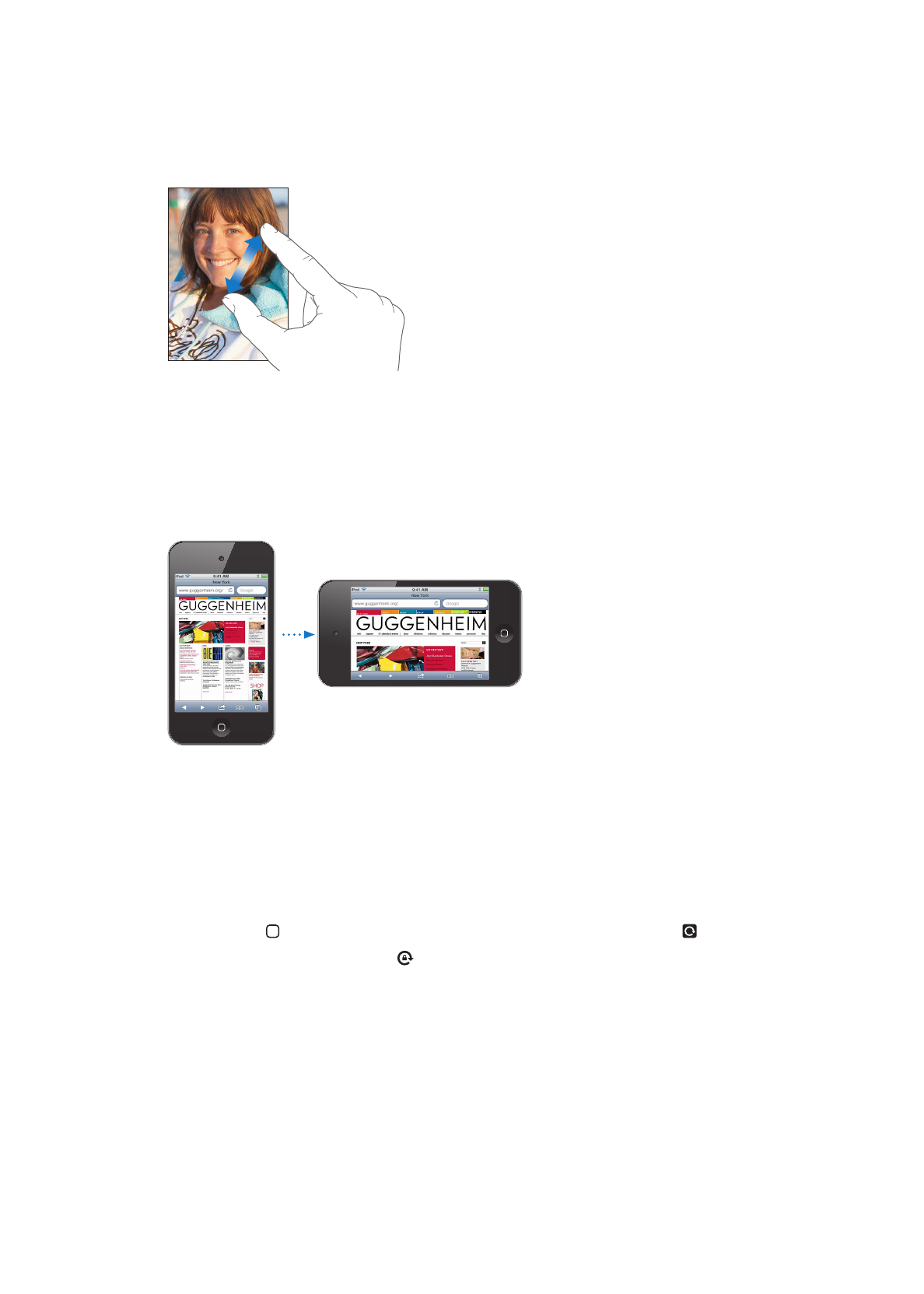
Using apps
The high-resolution Multi-Touch screen and simple finger gestures make it easy to use
iPod touch apps.
Opening and switching apps
Open an app: Tap it. Press the Home button to see apps on the Home screen.
Return to the Home screen: Press the Home button .
See another Home screen: Flick left or right, or tap to the left or right of the row of dots.
Flick left or right to switch
to another Home screen.
Go to the first Home screen: Press the Home button again.
View recently used apps (iPod touch 3rd generation or later): Double-click the Home button
to see the multitasking bar. Flick the bar left or right to see more apps.
Recently used apps
Switch to a recent app: Tap it in the multitasking bar.
18

Force an app to close: Touch and hold the app icon until it begins to jiggle, then tap .
Removing an app from the recents list forces it to quit.
Scrolling
Drag up or down to scroll. On some screens such as webpages, you can also scroll side to side.
Dragging your finger to scroll won’t choose or activate anything on the screen.
Flick to scroll quickly.
You can wait for the scrolling to come to a stop, or touch anywhere on the screen to stop it
immediately. Touching the screen to stop scrolling won’t choose or activate anything.
To quickly scroll to the top of a list, webpage, or email, just tap the status bar.
Find items in an indexed list: Tap a letter to jump to items starting with that letter. Drag your
finger along the index to scroll quickly through the list.
Drag your finger along
the index to scroll quickly.
Tap a letter to jump to
a section.
Choose an item: Tap an item in the list.
Depending on the list, tapping an item can do different things—for example, it may open a new
list, play a song, open an email, or show someone’s contact information.
19
Chapter 3
Basics

Zooming in or out
When viewing photos, webpages, email, or maps, you can zoom in and out. Pinch your fingers
together or apart. For photos and webpages, you can double-tap (tap twice quickly) to zoom
in, then double-tap again to zoom out. For maps, double-tap to zoom in and tap once with two
fingers to zoom out.
Zoom is also an accessibility feature that lets you magnify the screen with any app you’re using,
to help you see what’s on the display. See “Zoom” on page 128.
Viewing in portrait or landscape orientation
Many iPod touch apps let you view the screen in either portrait or landscape orientation. Rotate
iPod touch and the display rotates too, adjusting automatically to fit the new screen orientation.
You may prefer landscape orientation for viewing webpages in Safari, or when entering text, for
example. Webpages scale to the wider screen, making the text and images larger. The onscreen
keyboard is also larger, and may help your typing speed and accuracy.
Movies viewed in Videos and YouTube appear only in landscape orientation. Street views in Maps
also appear only in landscape orientation.
Lock the screen in portrait orientation (iPod touch 3rd generation or later): Double-click the
Home button , flick the bottom of the screen from left to right, then tap .
The portrait orientation lock icon appears in the status bar when the screen orientation is locked.
20
Chapter 3
Basics